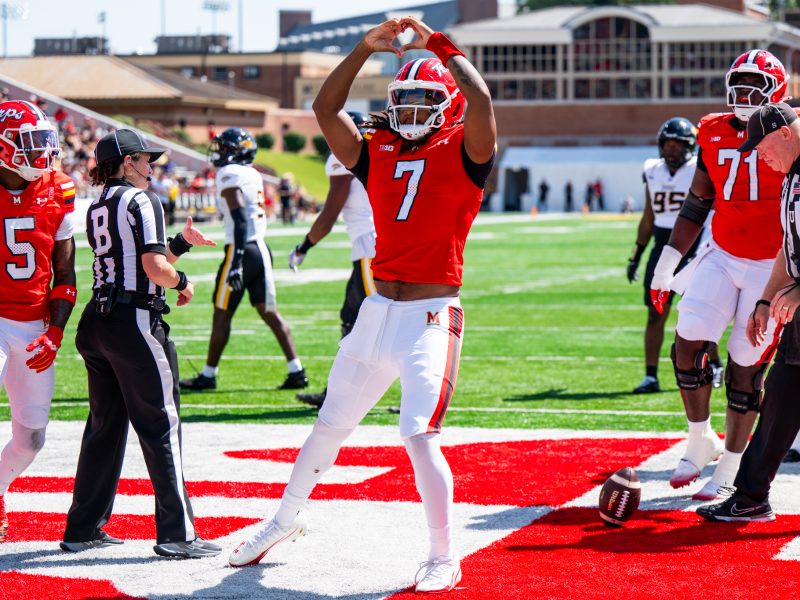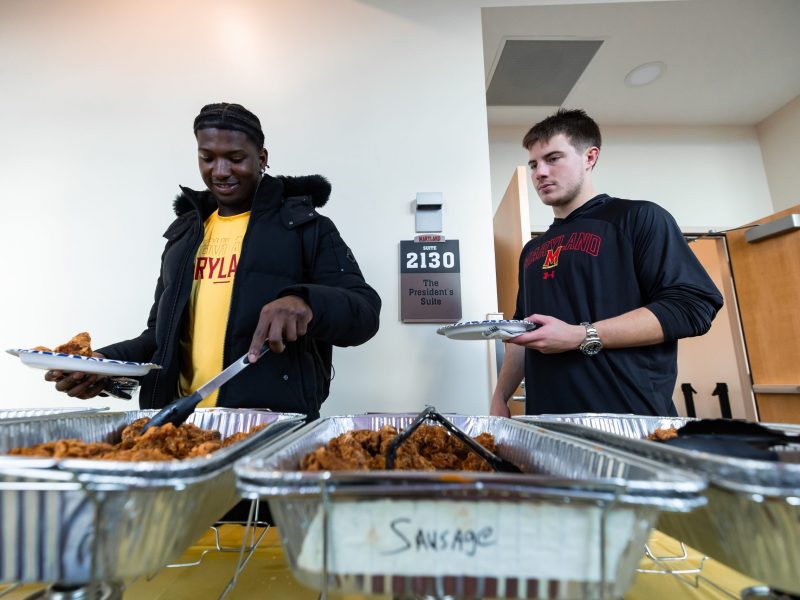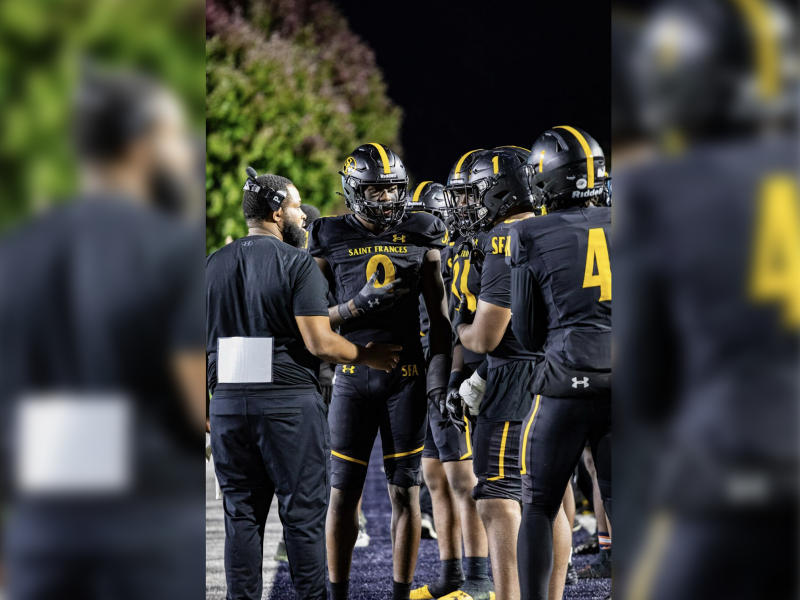Scott Shafer sat on the edge of his chair Jan. 12 in Gossett Team House as he spoke to the media for the first time as the new Terrapins football team’s defensive coordinator.
For a moment, he lamented the fact that in his seven years at Syracuse, the final three of which he was head coach, the Orange could never find consistent production at quarterback, though he was proud of the top defensive units he molded.
But then his attention turned toward the Terps defense and his eyes widened again.
While it won’t be his responsibility to sort out the Terps’ starting job under center, Shafer’s main goal for his defense is to put the offense in the best position to succeed.
“Our creed has to be get the ball back,” Shafer said. “Get the ball back to the offense. Give [offensive coordinator] Walt [Bell] a chance to get another two series in a game. Because if you win the turnover ratio, you’re also giving them opportunities to score points on offense, and that’s putting it into a nutshell.”
Shafer discussed the aggression he expects from his unit, repeating the idea of “keeping it simple enough that it’s complex” to describe how he would coach the Terps.
If a player can run a 4.5-second 40-yard dash, he said, then they should play at the same speed. A well-taught, fundamental playbook will allow the Terps to use their instincts rather than slowing down to think through calls.
Shafer expects the Terps to feature versatile looks, which he said is important to keep pace with the Big Ten’s top programs.
“One week, we’ll be going against Jimmy Harbaugh at Michigan running power with two tight ends and three tight ends and lead backs, and next week you may have Indiana come in an spread you out,” Shafer said. “You can’t just be a four-down guy. You can’t just be a three-down guy. You’ve got to be both. Sometimes you might have to be a five-down guy.”
That mantra filters down to individual players, too. Shafer highlighted cornerback Will Likely, who announced Jan. 8 his plans to return for his senior season, as a player the coaching staff expects to use at cornerback, safety, special teams and perhaps offense again.
Shafer used similar tactics while working with coach DJ Durkin at Stanford in 2007. Often times, the Cardinal would dress offensive lineman in tight end-numbered jerseys to provide more flexibility in positioning and schemes.
He hasn’t had a chance to work with the Terps in an organized fashion yet, but Shafer knows what he wants to see when practices start.
“One thing we want people to say after they watch us play football is, ‘Those kids are tough, and they play as hard as they can, and they finish the game with nothing left in the tank,'” Shafer said.


